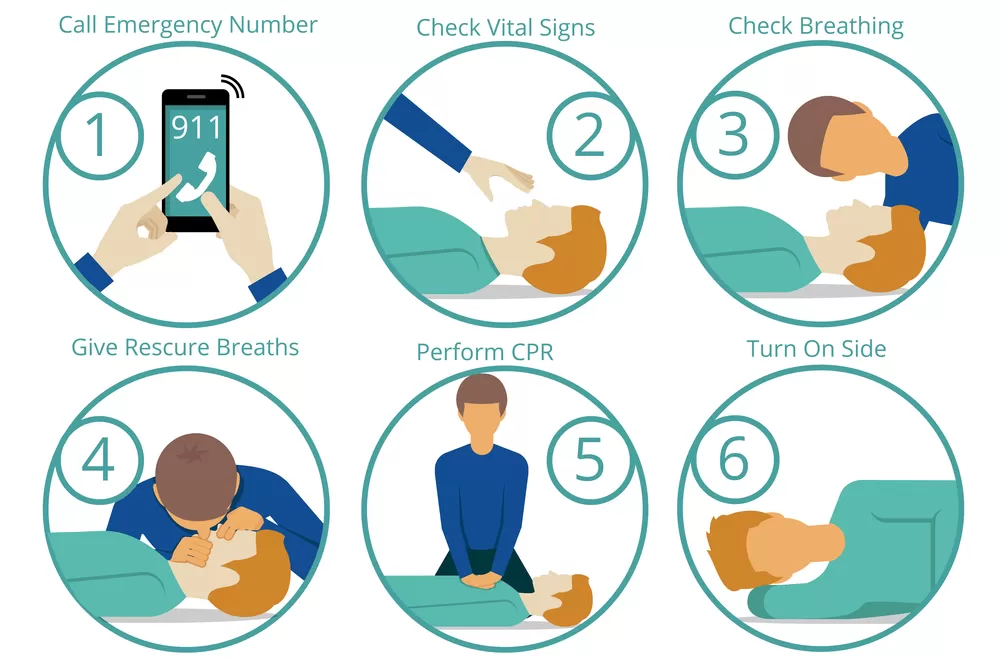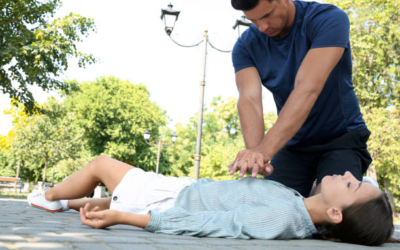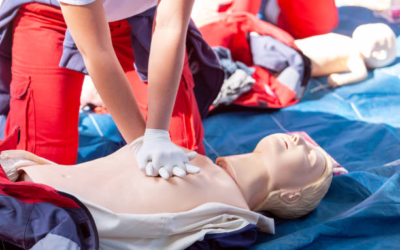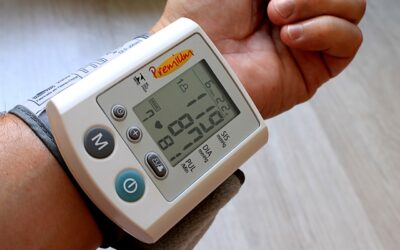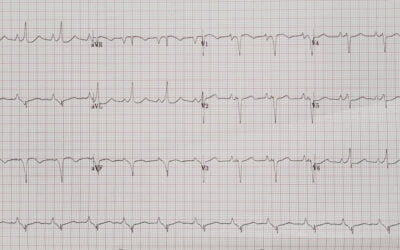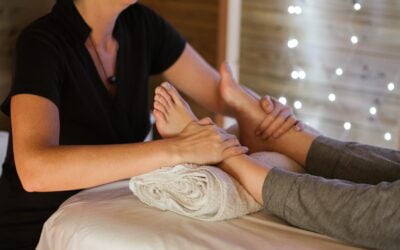What is External Cardiac Massage?
External cardiac massage or cardiac compression, is the name given to the First Aid technique which is used to stimulate blood flow from the heart by pressing on the patient’s chest wall. However, external cardiac compression (ECC) is always given together with expired air resuscitation (the kiss of life): the two together are called cardio pulmonary resuscitation (CPR).
External cardiac massage or compression is given in cases of cardiac arrest; when, because number of possible conditions, the normal rhythmic beating of the heart becomes disturbed, the contractions may stop. Cardiac arrest can be caused by a variety of factors: drowning, asphyxiation, hemorrhaging, electrocution, over-dosing with drugs, cardiac infarction (blocking of blood circulation) and coronary air embolism (an air-lock in a vein which reaches the heart), or pulmonary embolism (obstruction of the pulmonary artery by blood clot).
Symptoms of Heart Failure.
Although an electrocardiogram—a test that shows the pattern of heart beats on a graph—is needed to detect whether the heart has actually stopped, there are certain signs which indicate that the patient is experiencing cardiac arrest and circulatory failure.
After 6 to 12 seconds the heart stopped beating, the patient will lose consciousness. No pulse can be felt. After 15 to 30 seconds circulation has ceased, breathing will stop. The skin will turn grey and the pupils will become dilated.
If these signs are present, resuscitation is urgently required to re-start circulation and breathing. There is only a maximum of ten minutes remain in hand in which you have to do this. Within three or four minutes of circulation ceasing, the heart will become damaged due to lack of oxygen. And although the heart may be re-started, the brain will suffer irreversible damage.
Blood Flow.
The principle of cardiac massage is that by rhythmic compression of the chest wall (replacing the action of the heart muscle), blood flow will be generated in the carotid arteries (which supply blood to the brain) to resuscitate the brain.
What happens to the heart and to the blood flow during external compression is that as the resuscitator squeezes down, blood is driven from the heart and from all the large vessels within the chest.
Backward flow of blood is prevented by valves at the point where the great veins of the head enter the chest.
The chest, therefore, is like a large sponge full of blood which is emptied by one massive squeezing motion which is sustained for about half a second. During relaxation, the sponge re-expands and blood runs back to fill the spaces formed.
At this point the aortic valve which stands between the aorta (supplying blood to the whole body) and the left ventricle (the main pump from which the blood to the body comes) slams shut and prevents all the pumped blood from flowing backwards into the heart. With the next squeeze of the sponge, blood is further driven forward. The process is then repeated.
How To Carry Out External Cardiac Compression or Massage?
In case of cardiac arrest, heart massage should be begun immediately. No special equipment is necessary; nor is the help of a doctor.
Lie the patient on his or her back on a hard surface. Check to see if there is a carotid pulse by extending the head backwards, and feeling with all four fingers in the groove between the Adam’s apple and the strap muscles of the neck. Allow yourself at least ten seconds to be sure no pulse is present.
Move your hand down to the chest, to the lower third part of the sternum (breast bone). Place your fingers at the point where the ribs join: there is often a small bone here called the xyphoid. Place the palm of your hand on this point, and then place the palm of your other hand immediately on top of it.
Press down: the movement should be rhythmical and regular at a rate of 60 times a minute. Ensure that you keep your hand on the chest wall and that you press only in the mid-line between the nipples. For an adult, you should apply the full weight of your body. Children and babies require a much lower pressure: use one hand, or a thumb.
When cardiac compression is combined with expired air resuscitation, the person who is giving the mouth-to-mouth resuscitation should blow in a breath after every fifth heart compression, but no pause in the heart cycle should be allowed for a breath to be given. Although in adults the ideal rate is 60 beats per minute at an uninterrupted rhythm, in children the rate should be speeded up.
Infants up to five years old should be squeezed at about 100 beats per minute, those between the ages of 5 – 10 at about 80 beats per minute, and for older children 60 beats per minute.
The carotid pulse should be checked every two minutes to see if there has been a return of pulse. Once this occurs, you can stop cardiac compression. Usually heartbeat will be restored within a few minutes. The patient will begin to breath again, the grey skin colour will disappear and the dilated pupils will contract.
Dangers.
There is no danger of precipitating an irregular heart rhythm or stopping the heart, but over-enthusiastic compression of the chest may damage the soft organs that lie under the lower parts of the ribs. The result is that there is a rupture of the liver, stomach or spleen.
On occasions ribs are broken, but this is one of the hazards of performing a life-saving procedure. Generally, if the hands are placed in the right position and the heart compression is done properly, no damage should be done to the patient. It is important that a squeezing action with adequate force should depress the sternum only by 2.5-5 cm (1-2 in).
External Cardiac Massage For Cardiac Arrest.
Heart massage combined with the “kiss of life”. The casualty will be unconscious, so first loosen his or her clothing. Check that the airways are clear by running your finger around in the patient’s mouth. Check the carotid pulse, which is stronger than the one at the wrist.
If you are in doubt, put your head to the patient’s chest, slightly to the left of the lower end of the breast- bone—you will be able to hear if there is any heartbeat or not. Remember that in an emergency every seconds matter, so start immediately. Don’t wait for the doctor or ambulance.
Finding the carotid pulse is a technique to learn before it is needed. Practice on yourself by placing your fingers and thumb each side of your neck, below the jaw, until you feel it. Tilt your head back slightly and place your fingers between your Adam’s apple and the strap neck muscles. So, lets see the procedure of cardiac massage;
Cardiac Massage Steps.
Step 1.
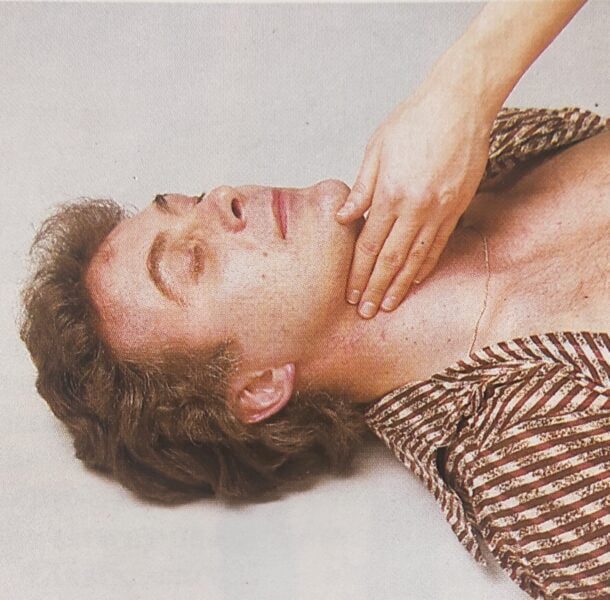
Lie patient on his or her back, on a hard surface. Feel the carotid pulse by extending the head backwards and feeling with your fingers between the Adam’s apple and strap muscles of neck.
Step 2.
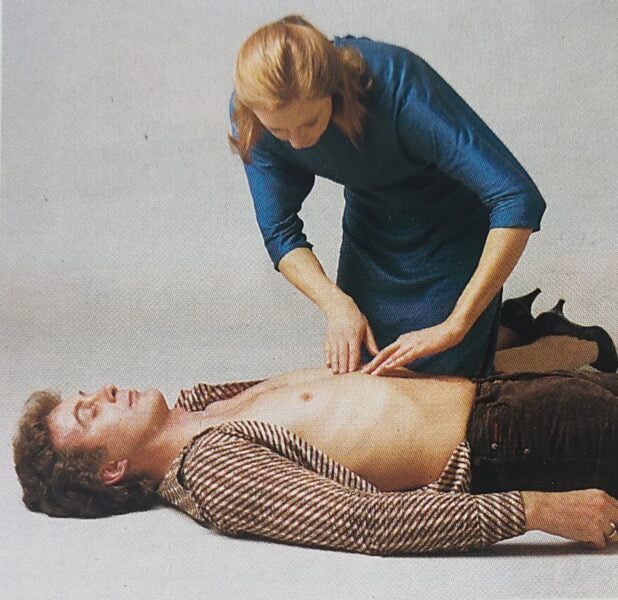
Establish the position of the heart by running your fingers down the chest to the lower third part of the breast-bone. Place your fingers at the point where the ribs join.
Step 3.

Place the palm of your hand at this point and then place the palm of your other hand on top of this. Press vertically downwards, rhythmically, 60 times a minute.
Step 4.
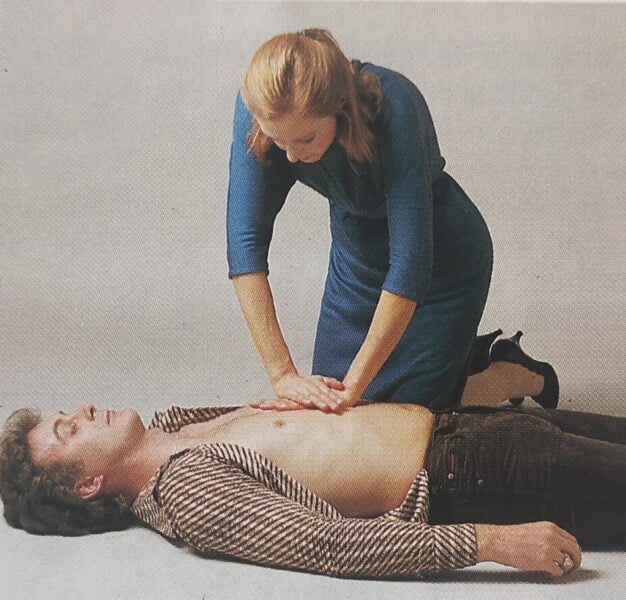
Make sure you keep your arm on the chest wall, pressing only on the line mid-way between the nipples. Apply full weight of your body for an adult—use less pressure on a child.
Step 5.
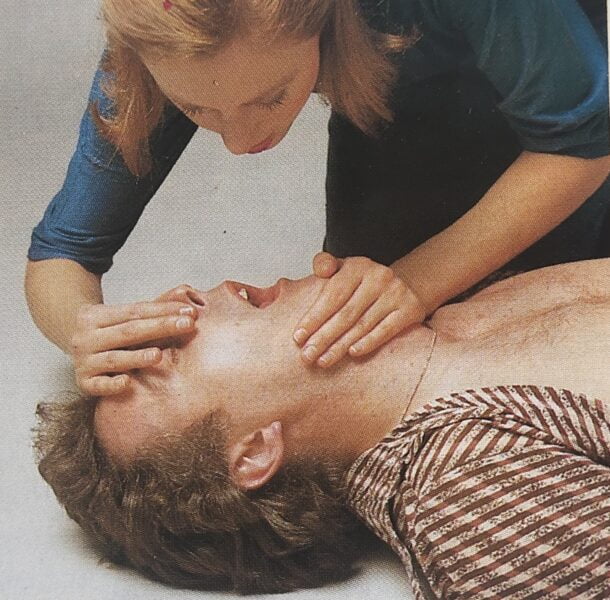
Mouth-to-mouth resuscitation has to be given simultaneously. If possible, someone else should do this. A breath should be blown in after every fifth heart compression.
Frequently Asked Questions.
1. How much time should elapse after heart failure before external cardiac massage is given?
A Cardiac arrest (heart failure) is a medical emergency. If after checking to see there is a pulse rate you find none, you must begin resuscitation immediately. Lack of blood flow to the brain for three or four minutes usually results in brain damage. Although you might be able to get the heart beating again, the patient might die from the brain damage if he or she should live, have permanent mental impairment. If more than ten minutes goes by before beginning resuscitation, then the heart will be irreparably damaged.
2. What should be done if a person has a cardiac arrest while eating and their mouth is filled with food?
Since cardiac massage and mouth-to-mouth resuscitation are given together, it is important that there is no obstruction to the airways while the latter is being carried out. Therefore you must remove any food from the person’s mouth and throat: the head should be sideways while you are doing this. Tilt the head back by pulling or pushing out and move the tongue from the back of the throat. Close the nostrils with your fingers and breathe into the patient’s mouth on every fifth chest compression. If the chest does not expand, you have either left some food in the throat or your technique is faulty.
3. If I saw someone collapse in the street, how would I know whether they had a cardiac arrest?
A sudden collapse may not indicate whether the person had a cardiac arrest. If you are unfamiliar with a person’s medical history this might make matters more difficult. However, there are a number of signs to look for. Check first to see if there is a pulse. See if the person has stopped breathing. Look out for any signs of the skin turning grey and if the pupils are dilated. If these signs are present, and the person appears dead, start cardiac massage.
Bottom Line.
External cardiac massage is one of the methods used to stimulate the heart into action when it has stopped beating. The technique will restore breathing and circulation and so save life if applied correctly.
+5 Sources
Freaktofit has strict sourcing guidelines and relies on peer-reviewed studies, educational research institutes, and medical organizations. We avoid using tertiary references. You can learn more about how we ensure our content is accurate and up-to-date by reading our editorial policy.
-
1. External cardiac compression during cardiopulmonary resuscitation of patients with left ventricular assist devices : https://academic.oup.com/icvts/article/19/2/286/835526
-
2. Cardiopulmonary resuscitation (CPR): First aid : https://www.mayoclinic.org/first-aid/first-aid-cpr/basics/art-20056600
-
3. What to know about asphyxiation : https://www.medicalnewstoday.com/articles/asphyxiation
-
4. Chapter 12 – Electrosurgery, Electrocoagulation, Electrofulguration, Electrodesiccation, Electrosection, Electrocautery : https://www.sciencedirect.com/science/article/pii/B9780323027526500171
-
5. xiphoid process : https://medical-dictionary.thefreedictionary.com/Xyphoid

 Workout
Workout
 Meditation
Meditation


 Stories
Stories


 Podcast
Podcast E-book
E-book